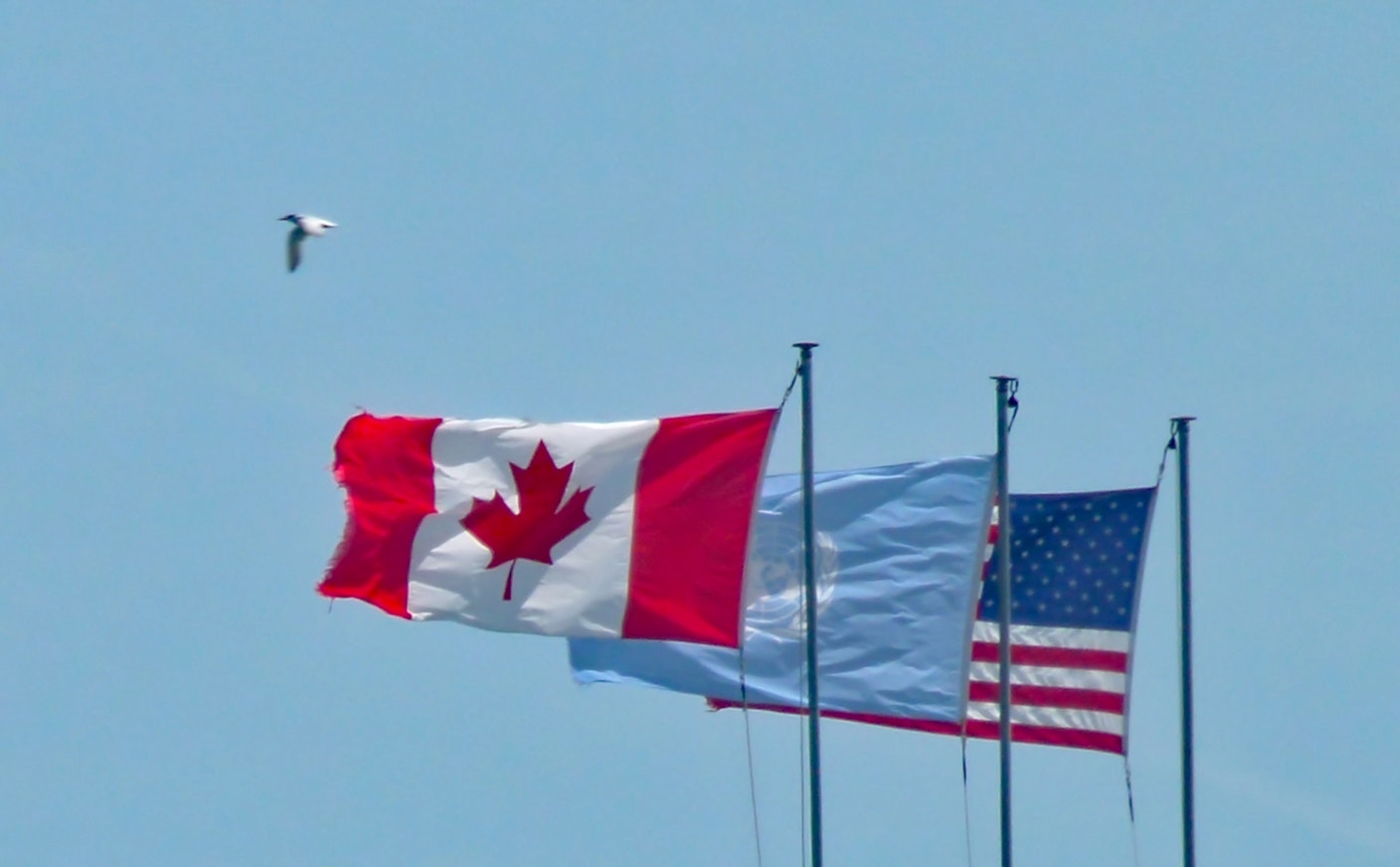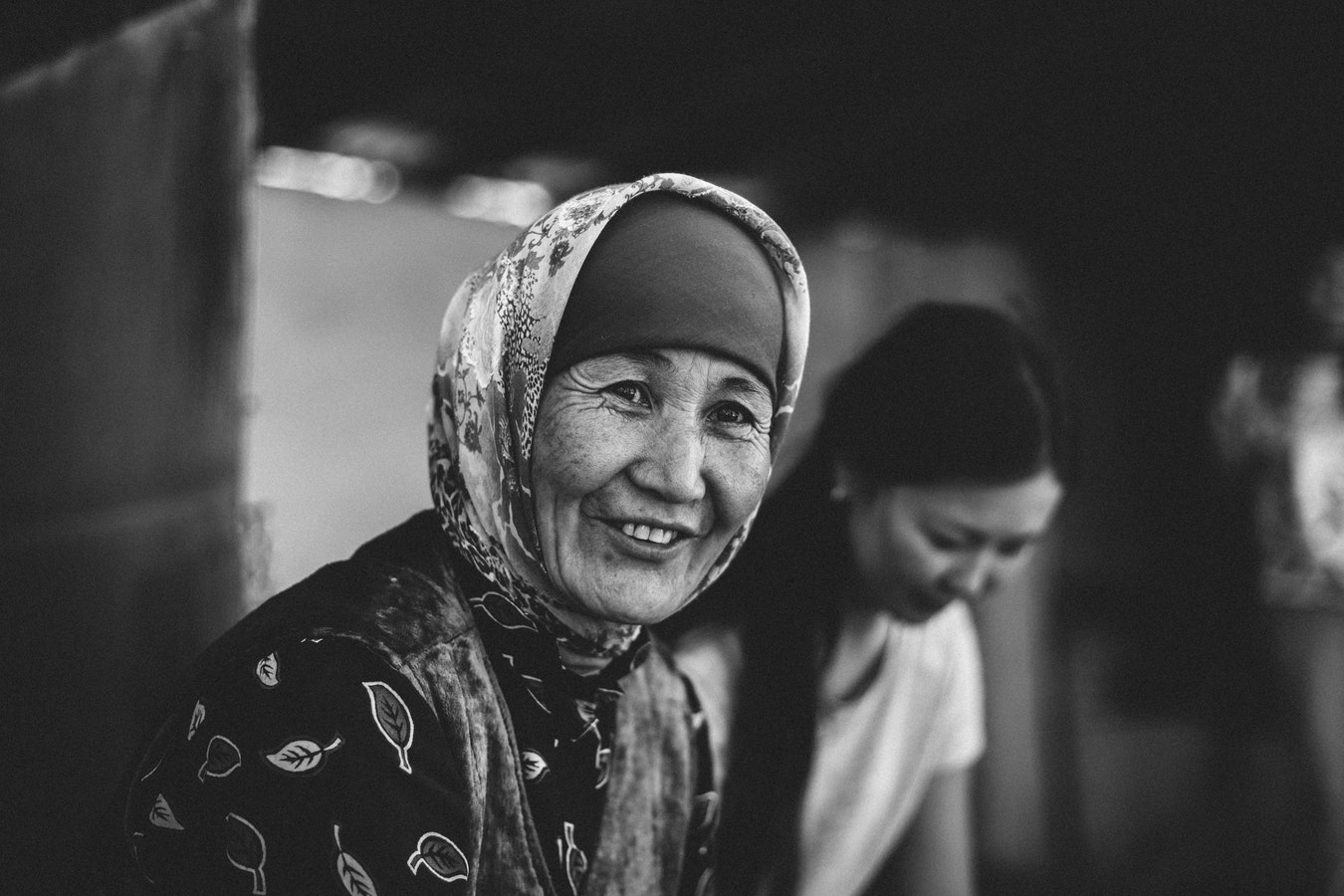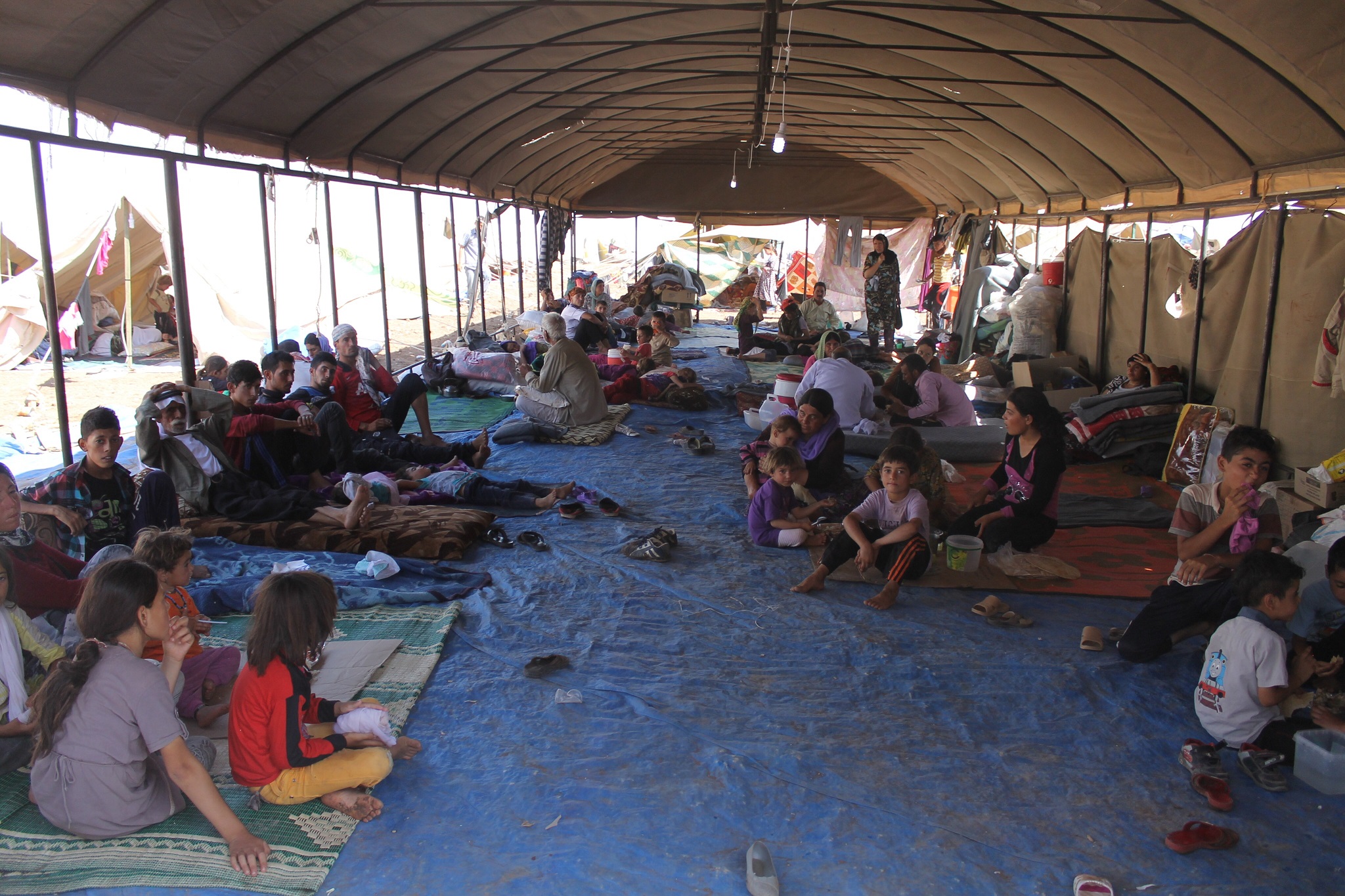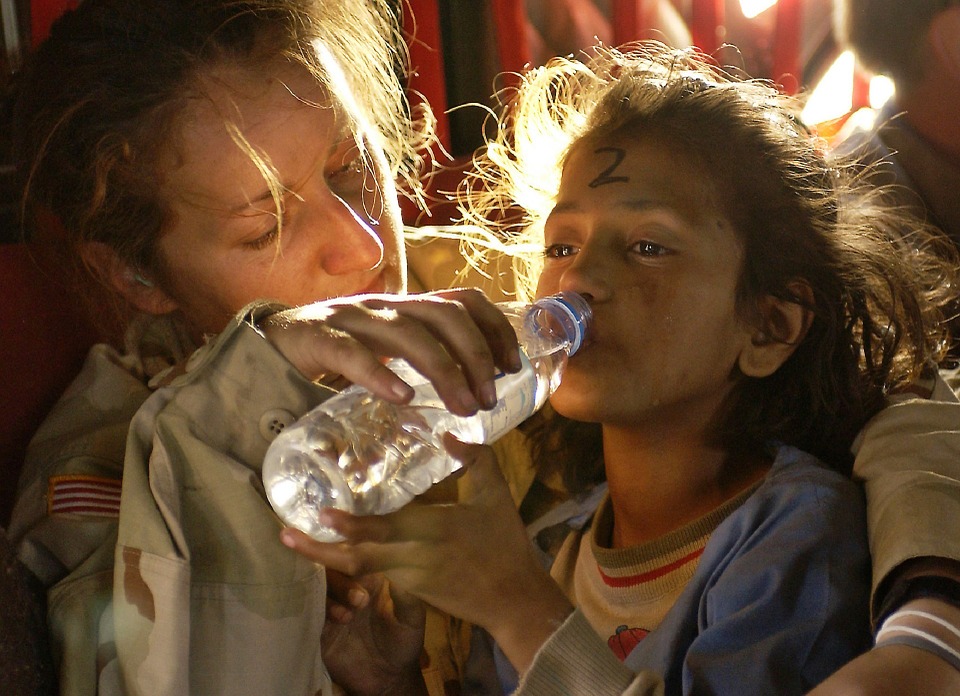Most Canadians Are Still Positive About Immigration
Study Finds Canadians are Still Positive about Immigration despite Negative Attitudes Internationally
Immigration has been a hot topic both in Canada and around the world in recent years. There are thousands of refugees fleeing violence in their home countries, and it often seems as though they end up in countries where they are not welcome. Anti-immigration sentiment is growing in regions that are experiencing an influx of refugees.
When Donald Trump became U.S. President in 2017, his anti-immigration threats caused many immigrants to fear for their future. Fearing deportation, many asylum seekers conducted irregular border crossings into Canada at unmonitored sections of the border.
Trump’s anti-immigration sentiment has been felt elsewhere around the globe as well. Far-right groups are gaining media attention, loudly voicing intolerant attitudes towards newcomers. And some of these extremist groups have even gained momentum in Canada.
But despite this global sentiment, most Canadians still hold positive attitudes toward immigration. According to findings from a recent survey, most Canadians were positive about immigration and some had doubts.
In February 2018, the Environics Institute for Survey Research interviewed 2,000 Canadians across the country. In response to the question “Are immigration levels too high?” an average of six-in-10 Canadians chose “disagree.” Furthermore, eight-in-10 Canadians agreed that immigrants have a positive economic impact.
The study also shows that positive attitudes toward immigration have been on the rise in Canada over the past 30 years. Overall, there is a growing trend toward greater acceptance of immigrants.
Opinions on immigration issues are also less polarized compared to those in the U.S. and Europe. Canadians are more likely to be uncertain or doubtful instead of strongly agreeing or disagreeing with immigration issues.
Although 35 percent of those surveyed agree that Canada takes in too many immigrants, that number has been declining over the last 10 years. For those who hold negative or uncertain attitudes towards immigration, fear may be fuelling their views.
The survey results also show that more respondents in Alberta and Quebec had what could be described as a negative attitude toward immigration. Compared to the previous survey, more respondents in these provinces expressed doubt over the legitimacy of refugee claims and whether immigrants are adopting Canadian values.
The rise in negative attitudes toward immigration in Quebec is likely due to the influx of asylum seekers that crossed into Quebec from the U.S. in 2017. The number asylum claims made in Canada through irregular border crossings was 20,593. And the majority of those were made in Quebec.
However, Albertans felt the strongest about immigration, both against and in favour of immigration. These anti-immigration sentiments may be a side effect of the province's perceived economic uncertainty. With the provincial oil industry’s future in doubt, coupled with the lasting impact of severe wildfires and a depressed economy, immigrants and refugees may be seen as economic threats.
But for the most part, Canadian society is in favour of immigration. There are still some negative attitudes in Canada, but the majority of Canadians value inclusivity and tolerant attitudes.
A Closer Look at Budget 2018’s Refugee Spending
2018 Federal Budget is Giving Funds to Help Handle the Increasing Number of Asylum Claims Made in Canada
Budget 2018’s announced funding for immigration and refugee programs addressed a number of ongoing issues within Canada’s approach to refugee resettlement and processing. One such challenge, irregular migration and refugee claims at unofficial border crossings, was given particular attention. With $173.2 million in funding, Canada is looking to speed up processing times and improve security screenings to address ongoing challenges.
Since November 2016, Canada has seen a steady increase in the number of refugee claimants crossing into Canada from the U.S. at unofficial borders. These border crossings have a direct correlation to Donald Trump’s election, spiking in the summer of 2017 with the end of temporary protected status for Haitians.
Processing these claims put a strain on Canada’s systems, and as such, the Federal Government is looking to address these issues through proposed budget spending.
Refugee Claims at Unofficial Borders
In 2017, there were 20,593 asylum claims made between ports of entry. Ninety-one percent of these were intercepted in Quebec. The majority of asylum seekers have crossed over into Quebec at the now-famous Roxham Road crossing due to its accessibility. Also, many Haitians have claimed asylum in Quebec because of the large Haitian community in this province, specifically in Montreal.
In response to the growing number of refugee claims in Canada, the 2018 Federal Budget allocated $173.2 million to help border officers handle the numerous asylum seekers. This will support both security at the Canada-U.S. border, as well as the processing of asylum claims.
Specific Funding Goals
Funding will go towards processing claims quickly in order to manage the high number of asylum claims. Resources will be directed at supporting:
- Short-term processing and screening at the border; and,
- Decision-making capabilities at the Immigration and Refugee Board.
The Budget aims to preserve Canada’s values of being an open and welcoming country while upholding Canadian and international refugee laws. Those seeking asylum in Canada must be given due process and treated with compassion.
The Budget is in line with maintaining Canada’s reputation as a country that welcomes newcomers, especially those who need refuge in a safer home.
For more information and help with refugee claims, contact a refugee law office.
Canada’s Family Sponsorship Program Needs an Overhaul
Immigration Lawyers Question the Improvement of the New Parents and Grandparents Program
In 2017, the Federal Government introduced changes to its Parents and Grandparents Program. The goal of this sponsorship program is to reunite families, and eligible candidates can apply to sponsor their parents and grandparents, as the name states.
These changes were meant to make the selection system more efficient, but several immigration advocates, lawyers, and critics have argued that the system still needs work. In particular, the current lottery system has come under scrutiny with regards to fairness, since it chooses candidates at random, not by merit.
Too Much Like a Lottery?
Many critics argue this system relies too much on chance. Those who are qualified to sponsor their families may never get a chance to do so or may have to wait years for their names to get drawn.
Would-be-sponsors of parents and grandparents must first fill out an intent form. In 2017, a new section was added to this form that asked if applicants to the Parents and Grandparents sponsorship program met the program’s income requirements.
By responding yes, the form is entered into the lottery system. Applicants are then randomly selected and invited to apply to sponsor their family members.
Prior to 2017, this lottery system did not ask if applicants met income requirements. As a result, many draws were “wasted,” as the selected applicants weren’t eligible to apply, or were no longer interested.
Lottery vs. First Come, First Serve
Prior to these lottery systems, the family sponsorship program operated on a first-come-first-serve basis. While there are pros and cons to both systems, the first-come-first-serve system avoided all questions about qualification. To apply, the sponsors and applicants had to meet all qualifications at the outset.
The obvious issue with the lottery system is how easy it is to apply without meeting qualifications. That issue was the impetus behind the 2017 introduction of the intent form, but there is still much room for improvement.
Room for Improvement
The lack of merit-based decision making, or rather decision-making based on confirmed application data, continues to prevent the reunification of many families. Perhaps the biggest issue is that because this system is based on chance, there are no factors an applicant can directly address or appeal upon a rejection. They simply had bad luck, no matter how good their standing, and irrespective of potentially meeting all the requirements.
Yazidi Refugee Program Lacks Coordination
Refugee Workers Call for More Government Effort to Help Yazidi Women Overcome Severe Trauma
As part of a special refugee resettlement program, the Canadian government welcomed 1,200 Yazidi women and children in 2017. This program sought to help the most vulnerable victims of ISIS.
The government intended to address the mental health needs of these victims, but the program falls short, according to some refugee workers. Based on these accounts, support services are struggling to coordinate, leaving traumatized women without the support and assistance they need. Across Canada, many refugee workers have noticed a disparity in this resettlement program.
The Canadian government funds specialized nongovernmental agencies to do the frontline work and leave specialized program planning to these agencies. This means that the preparation and implementation of support programs vary by agency.
Lack of Trauma Counselling
Unfortunately, it seems that many agencies were not prepared for the unique challenges of the Yazidi refugees. Upon arrival in Canada, many Yazidi women showed symptoms of post-traumatic stress disorder, and intake workers were not trained or prepared to handle their post-traumatic episodes.
While some agencies provide trauma counselling, others do not. The government was aware of the victims' trauma when committing to their resettlement, so trauma counselling should have been a priority from the very beginning.
But like other resettlement programs, mental health treatment is left in the hands of family doctors. It’s up to these doctors to refer patients to therapy and counselling, though this system often leaves trauma victims waiting months to see a therapist. As they wait, they continue to suffer from the psychological pain of the trauma they experienced.
Language Barriers
Language is another barrier to providing these women with the help they need. Many Yazidi refugees speak Kurmanji, a Kurdish dialect and the ceremonial language of Yazidism. There are, currently, 16 interpreters who can communicate in Kurmanji – and they already had 1,500 Yazidis to help prior to the arrival of ISIS victims.
Complicating matters further, many Yazidis refuse to speak Arabic. What’s more, they won’t make use of Muslim Kurdish translators speaking Badini, a dialect very similar to Kurmanji. Much of this stems from the abuse and trauma suffered at the hands of the Islamic State.
Need for Family Reunification
Refugee workers are calling on the government to bring the families of these Yazidi women to Canada. They include spouses, children, and extended family.
This could help both the women and their families heal from their trauma. Family reunification helps refugees with resettlement and integration into society. They are more likely to do well if they have the love and support of family keeping them going.
Many of these women don’t know where their families are or if they’ve been hurt, enslaved, or worse. Not knowing where their children and loved ones are is as painful as their own trauma. They cannot start healing until they are with their families again and know the fate of their loved ones.
With time, more agencies have learned how to support the Yazidi refugees. Instead of relying on family doctors for mental health care, some agencies have started their own trauma counselling and support groups. But the lack of coordination across this resettlement program means that many are still at risk of falling through the cracks. When it comes to caring for vulnerable populations, their unique needs must always come first.
Contact a refugee law office for more information on refugee claims and resettlement programs.
Canada To Resettle Another 1000 Vulnerable Refugee Women & Girls
Canada’s Feminist Foreign Aid Policy is Commendable, But Critics Argue Canada Can Do More
Refugees around the world flee violence at home and sometimes they end up in danger elsewhere. These vulnerable populations are often persecuted for their religion and culture and are treated poorly even in the countries they’ve fled to. Instead of finding refuge, they’ve only found more fear. But countries like Canada can do their part in the resettlement of these populations, giving them safer homes. For more information about Canada’s refugee resettlement programs, contact a refugee lawyer.
Budget Spending for Vulnerable Women
As part of Canada’s federal Budget 2018, the government proposed spending $20.3 million over five years to bring in another 1,000 vulnerable women and girls from conflict zones around the globe. This commitment was inspired by the government’s recent resettlement of more than 1,200 mostly Yazidi women who were enslaved by ISIS.
Canada will help these women resettle with a government-assisted refugee program. The United Nations Refugee Agency will work with the Canadian government to help identify vulnerable refugee women. This program is not targeting refugees from a specific ethnic group or country. Instead, it is prioritizing those based on vulnerabilities and need.
Examples of these vulnerabilities include:
- Those in severe danger who need resettling for security reasons;
- Those who need access to specific medical care; and,
- Those who need to provide a better quality of life for their children.
Critics Argue Numbers Are Insufficient
Although Canada’s support of vulnerable refugee populations is commendable, critics say that resettling 1,000 women and girls over five years is insufficient. That amount comes to only 200 vulnerable refugees per year. And when compared to the existing number of vulnerable women and girls, it’s a very tiny fraction. There are about 11 million vulnerable women and girls around the world.
A representative from the UN said they can only resettle eight percent of refugees deemed extremely vulnerable—those who cannot survive in the countries they’ve fled to for asylum. These vulnerable populations have nowhere else to turn to, and are stuck resettling in hostile environments.
Many vulnerable women and girls experience violence, rape, and other trauma. Women may have to resort to sex work to survive and care for their children since they cannot secure employment in the countries where they are currently seeking asylum.
Canada’s new feminist foreign aid policy is a step in the right direction. But the big picture shows that 200 vulnerable refugee women a year is not nearly enough to help the many women and girls in dire need around the world. More countries need to do their part, and Canada can certainly help more vulnerable refugees with resettlement far from the danger.
Contact a refugee lawyer for more information on Canada’s refugee programs.





